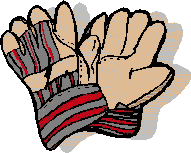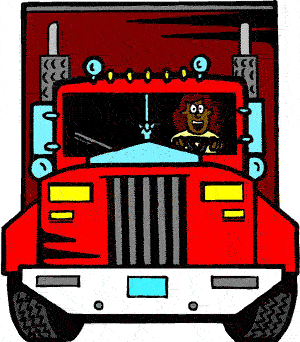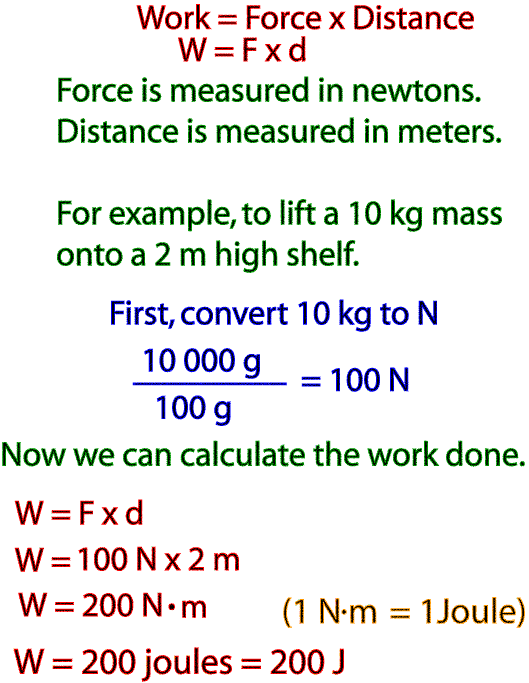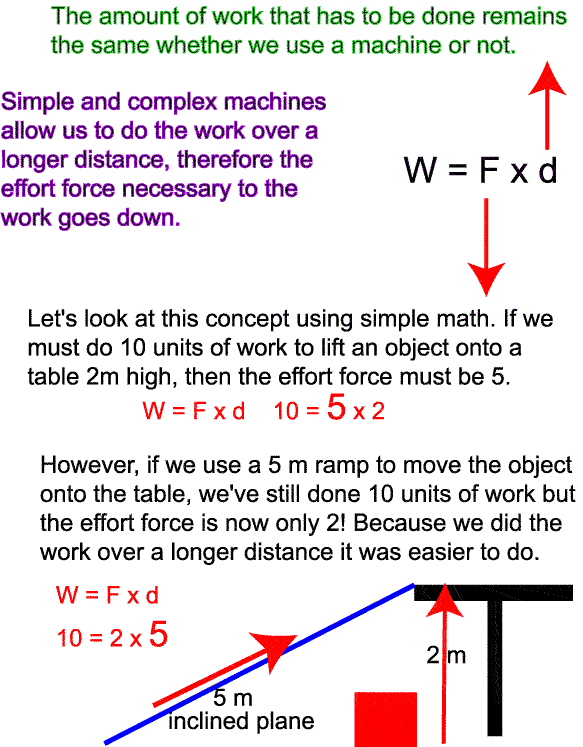Week 23 - Work and Efficiency
| Site: | MoodleHUB.ca 🍁 |
| Course: | Science 8 LearnNet |
| Book: | Week 23 - Work and Efficiency |
| Printed by: | Guest user |
| Date: | Monday, 17 November 2025, 5:42 PM |
Description
Week 23 - Science, Society and the Environment
.
Lesson 8
Reading pg. 278-286

So far in our exploration of mechanical devices we have been calculating speed ratios and mechanical advantage based on the designs of the simple machines. These theoretical values showed that they had the same values. But in real life this never happens because there are physical factors that affect the operation of all machines. The mechanical advantage is reduced by friction. You may recall from science seven that friction is a force that resists motion. The rougher the surfaces of the simple machine the more the force of friction reduces the mechanical advantage of machine. The energy lost by the force of friction is usually converted to heat.
|
Try This!
On cold days many people rub their bare hands together to warm them up. What force are they using? Try it for yourself. Rub your hands lightly together for about 15 seconds. What did you feel? Now do it again, but this time press your hands together more firmly. What was the result this time? Finally, put some hand lotion between your hands and rub them together a third time. Did the addition of the lotion make any difference? |
 |
Friction can be good or bad! |
 |
Although the heat produced by friction might be useful some times, it is generally a problem when it comes to machines. For example, the friction in your car or truck engine creates a lot of heat. If this heat was allowed to remain in the engine block it would soon expand the moving parts until the engine seizes up - not a good thing! If this happens the engine is ruined and you will have to buy a new one which is very, very expensive.
To avoid this problem, water (plus antifreeze in Canada) is circulated through the engine and radiator. As moving air passes through the radiator it re-cools the water which then heads back to the engine. Another way of reducing friction is to lubricate the moving parts of the engine. What do you think is used to lubricate gas engines?
Determining the Efficiency of a Mechanical Device
So far we know that friction affects all mechanical devices. But how do we go about measuring the affect of friction? By using a simple formula we can determine the overall efficiency of a machine. Efficiency is the measurement of how well a machine uses energy. The efficiency of a machine can be found by dividing the mechanical advantage by its speed ratio.

The efficiency of the Lego would be 67%. That means that our machine lost 33% of its mechanical advantage due to friction.
The gasoline combustion engine found in most cars and trucks is only about 25% efficient while a diesel engine is about 40% efficient. That means most of the gasoline or diesel fuel that we put into an internal combustion engine is given off as heat - not moving us down the road. Not only is this extremely wasteful but it is very hard on the environment. Carbon dioxide emissions from vehicles is thought to be a major contributor to global warming. Hopefully as your generation gets older you will be driving more efficient machines that use hydrogen fuel cells instead of gas engines.
Go to BrainPop at " http://www.brainpop.com ".
Click on "Log In" then use the user ID "argyllbp" and the password "brainpop".
Then do the search by typing in "hydrogen fuel cells" and select the one that fits the search.
![]() Exercise 3.1A: Managing Friction
Exercise 3.1A: Managing Friction
|
|
![]() Exercise 3.1B: Draw a Machine
Exercise 3.1B: Draw a Machine
|
© 2002 Alberta Online Consortium
|
.
Lesson 9
Read pages 287 - 292
 |
 |
 |
Work is done when:
- a force is applied to an object, and
- when the object moves in the general direction of the force.
 |
That means if you go out and try to move a semi-trailer truck and you push and push until you feel like your going to have a heart attack but don't move the truck - you didn't do any work! |
The reason why the word 'work' has a very exact meaning is because it describes a mathematical formula.
W = F x d
But before we go over the math there are a few things you need to know. If you have measured the force of gravity pulling on the object with a force meter your measurement will already be in newtons. But if you only know the mass (kg) of the object then you will have to convert it into newtons.
|
Force is measured in newtons (N).
If you want to calculate the force of a mass (aka its weight), you need to think about this formula:
Force = mass x acceleration
If you want to calculate the force of a mass on Earth, the acceleration is the pull of gravity on that object.
Force of Gravity = 9.8 m/s2
However, we will just round it up to 10.
To convert mass (kg) to weight (N), multiply by 10. For example: Convert 20 kg to Newtons. 20 kg x 10 = 200 N |
|
We measure energy in Joules (J) .
1 Joule = 1 N of force moving through 1 metre (m) |
Now lets look at the example below:

Now it's your turn.
It is very important for you to realize that any machine you are using to do a job can only make the work easier. But the amount of work you are doing to complete a job remains the same. Whether your using a pulley, an inclined plane (a ramp) or any other machine, you must put the same amount of work into the machine that you want to come out the other end.
Then why do we use machines if we still have to do the same amount of work? Because simple machines allow us to do the work easier. In other words, the machine allows us to do the work over a longer distance and that allows us to use less effort force. Look at the formula below, if the work (W) remains the same and the distance (d) over which you do the work goes up, then the effort force (F) has to be less. Therefore the work you had to do was easier to do because you did it over a longer distance.

Machines allow us to do the same
amount of work easier - using less force!
Wow... Cool!
You have two options for your Section 3 Quiz - a multiple choice quiz or a written response quiz. You may choose to write the multiple choice or the written response. You only need to write one, so the choice is up to you! You are allowed to try both quizzes if you want, but it is not required.
The quiz attempt with the highest grade will be the one that is recorded on your report card.
The multiple choice quiz has 10 multiple choice, matching, and true/false questions. You have 15 minutes to complete it. As soon as the quiz is submitted it will be auto-graded and you will receive a grade immediately.
Click the image above to start your quiz
The written response quiz has 5 short answer questions. Your responses must give a complete and detailed answer to the question. You have 20 minutes to complete the quiz. This quiz needs to be manually marked by your teacher, so you may have to wait a few days to get feedback and a grade.
Click the image above to start your quiz


